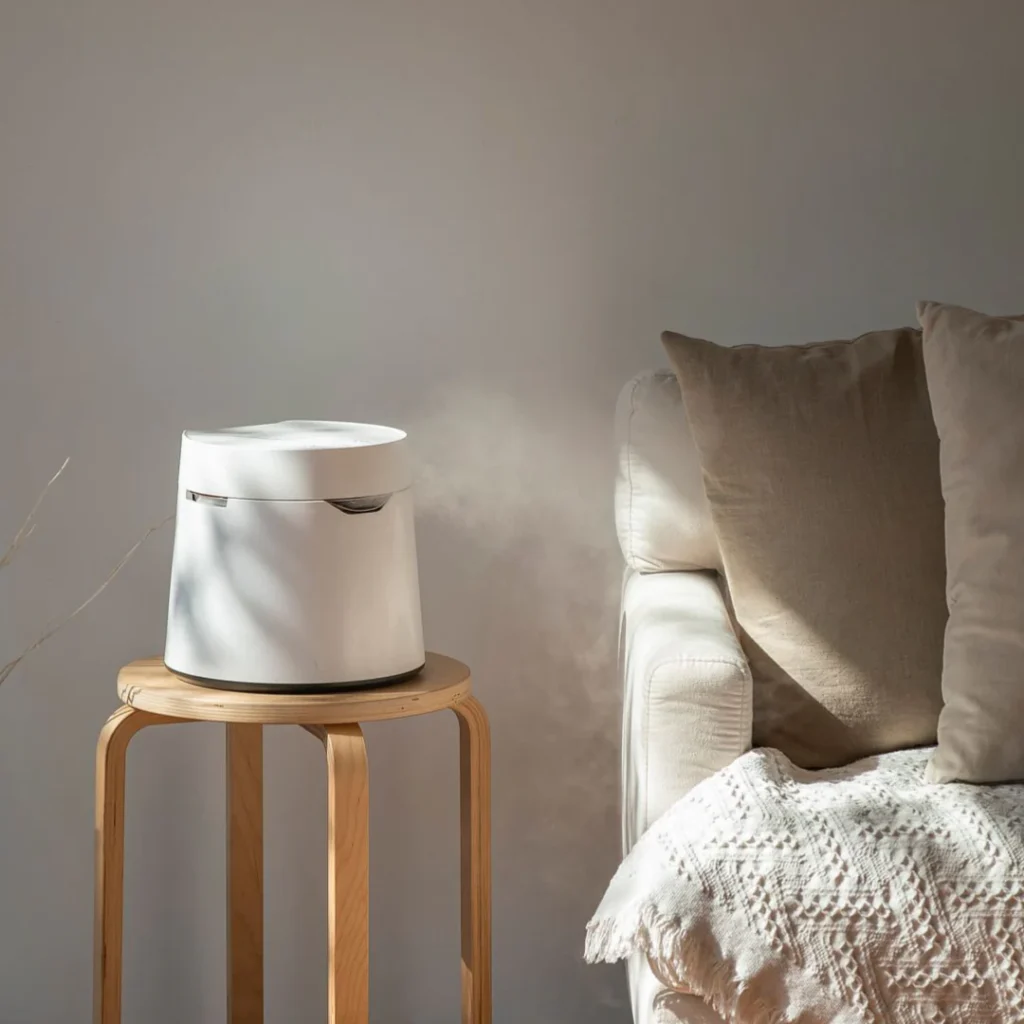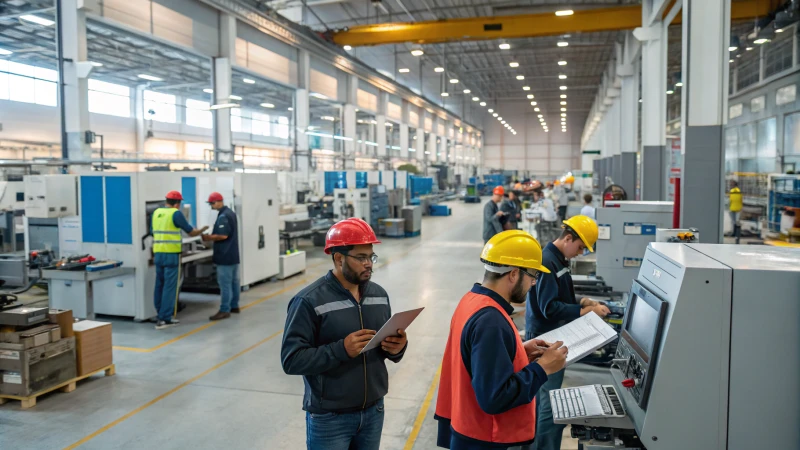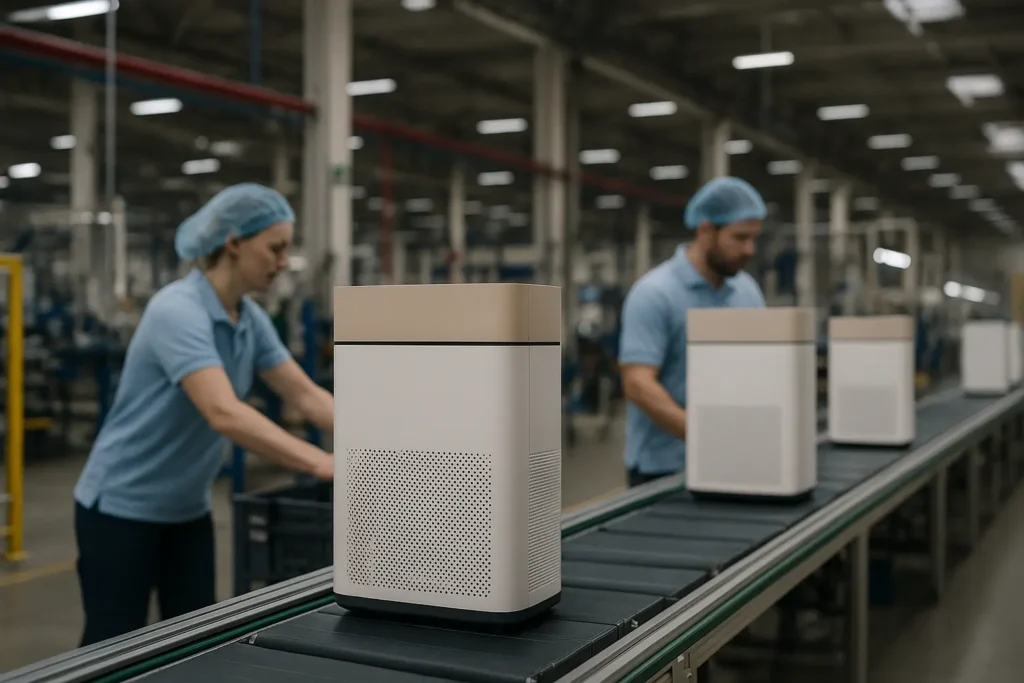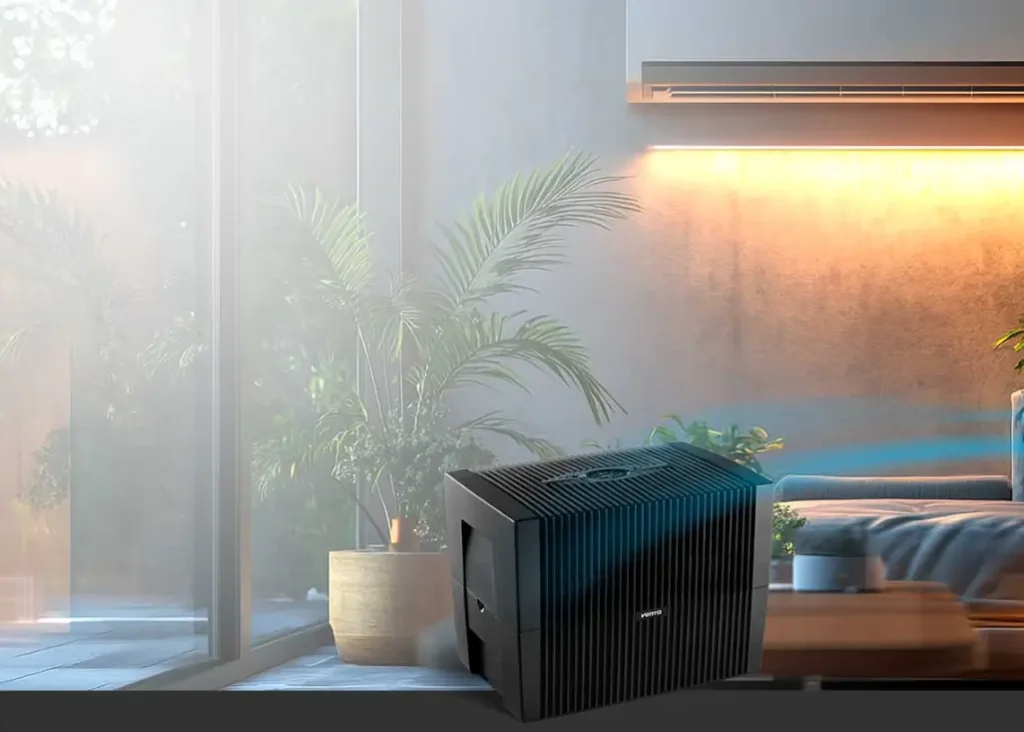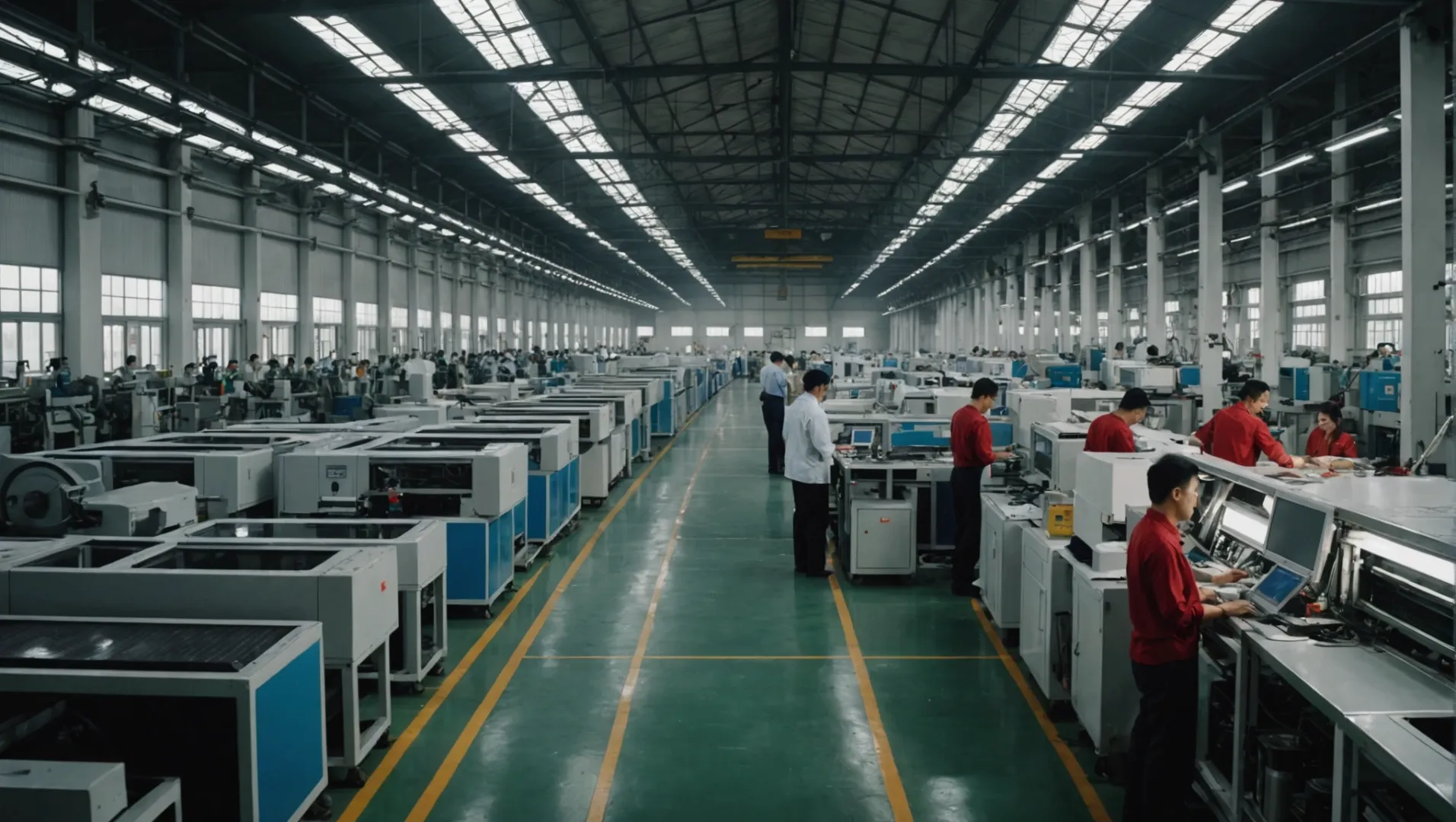
Avez-vous déjà réfléchi à l'origine de votre purificateur d'air ? Le besoin d'air frais a considérablement augmenté, ce qui a suscité la curiosité quant aux principaux lieux de production.
La Chine reste la principale plaque tournante de la production de purificateurs d'air en raison de sa chaîne d'approvisionnement bien établie et de sa rentabilité. Toutefois, le Viêt Nam apparaît comme une alternative viable, offrant des avantages potentiels dans un contexte de changement de la dynamique commerciale mondiale.
Bien que la Chine offre d'excellentes compétences et une grande expérience dans la production de purificateurs d'air, le Viêt Nam est un choix intéressant, notamment en raison des récents problèmes tarifaires et des changements dans la politique mondiale. Il convient d'examiner attentivement les détails de la fabrication dans chaque pays pour parvenir à une conclusion judicieuse.
La Chine a des coûts de main-d'œuvre inférieurs à ceux du Viêt Nam pour la production de purificateurs d'air.Faux
Les dépenses de main-d'œuvre de la Chine augmentent en raison des progrès économiques ; celles du Viêt Nam restent plus faibles.
Quelles sont les conséquences financières de la fabrication en Chine ou au Viêt Nam ?
Il est très important pour les entreprises qui tentent d'améliorer leurs plans de production de comprendre les éléments de dépense liés à la production de biens en Chine par rapport au Viêt Nam.
Les coûts de fabrication en Chine sont généralement inférieurs en raison d'une chaîne d'approvisionnement bien établie, mais les droits de douane peuvent augmenter les dépenses. Au Viêt Nam, les coûts initiaux sont plus élevés, principalement en raison de la dépendance à l'égard des matériaux importés, mais les économies potentielles en matière de droits de douane et les développements futurs de l'infrastructure pourraient équilibrer les dépenses.
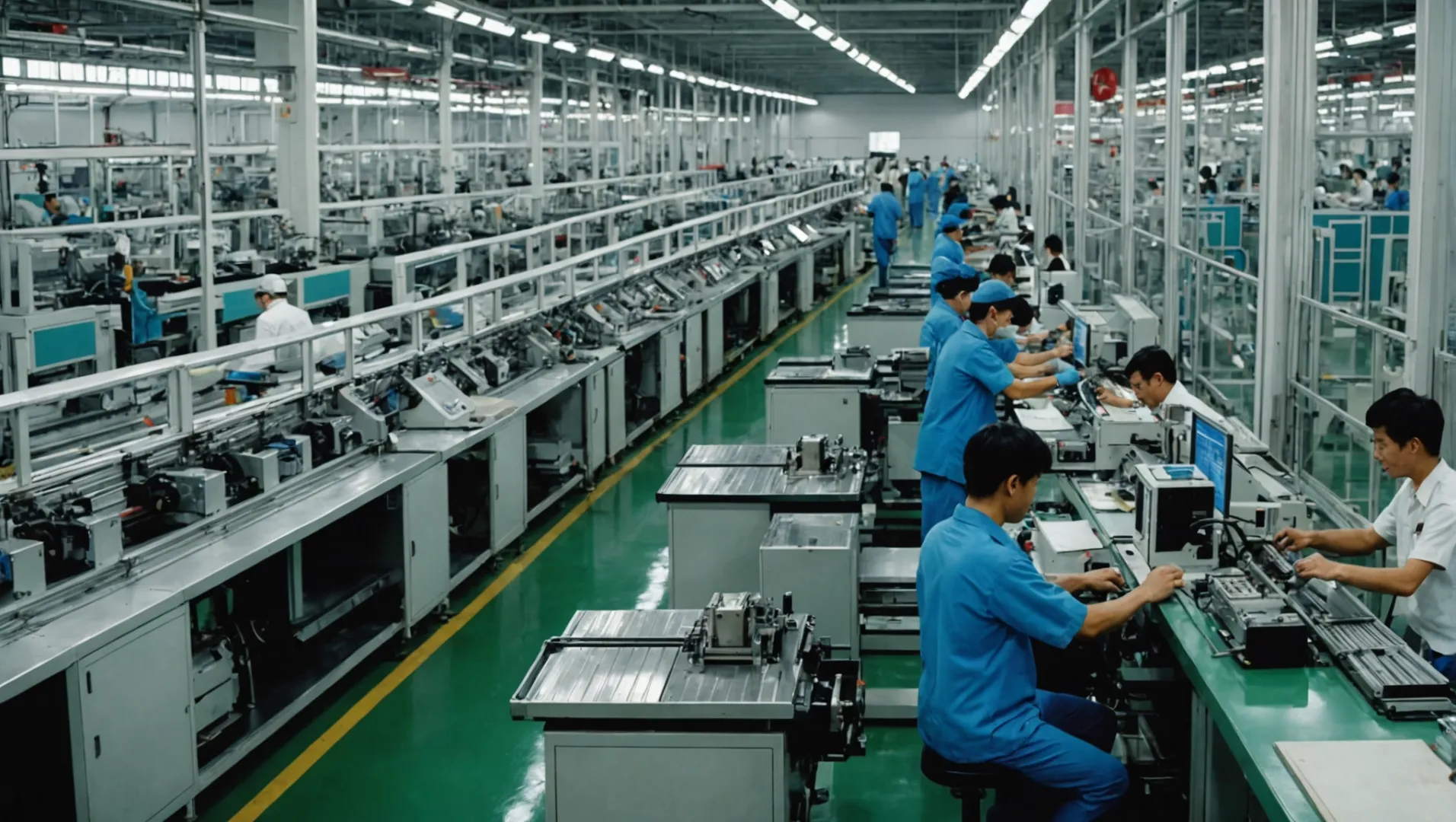
Évaluation des coûts de main-d'œuvre
La main-d'œuvre est un facteur important lorsqu'on examine les dépenses de fabrication en Chine et au Viêt Nam. En Chine, les salaires ont augmenté en raison de la croissance économique et de l'amélioration des conditions de vie. Néanmoins, la Chine offre des travailleurs compétents et dotés d'une grande expérience de la fabrication dans des domaines tels que l'électronique, le textile et les purificateurs d'air.
Le Viêt Nam, en revanche, affiche des coûts salariaux moins élevés en raison de la croissance de son économie. Il est donc intéressant pour les entreprises qui souhaitent économiser de l'argent. Mais l'inconvénient est que la main-d'œuvre est souvent moins expérimentée, en particulier dans des domaines spécialisés comme la production de purificateurs d'air.
Efficacité de la chaîne d'approvisionnement
La solidité de la Chine réseau d'approvisionnement1 est un avantage clé, car elle permet un accès facile aux matières premières et aux pièces. Cette configuration raccourcit les temps d'attente et réduit les dépenses, ce qui fait de la Chine un choix solide pour la fabrication.
D'autre part, le réseau d'approvisionnement du Viêt Nam continue de se développer. De nombreux matériaux et pièces proviennent de Chine, ce qui entraîne une augmentation des coûts de production. Toutefois, le Viêt Nam dépense beaucoup d'argent pour améliorer son infrastructure, ce qui pourrait améliorer sa chaîne d'approvisionnement à l'avenir.
Impact des tarifs et de la politique commerciale
Les droits de douane imposés par des pays comme les États-Unis sur les produits chinois ont poussé de nombreuses entreprises à envisager des options comme le Viêt Nam. Bien qu'il puisse sembler à première vue moins cher de produire en Chine en raison des systèmes établis, ces droits de douane peuvent considérablement augmenter les coûts.
Le Viêt Nam offre un moyen d'éviter ces droits de douane, ce qui pourrait réduire les dépenses des entreprises qui vendent sur certains marchés. Avec l'évolution des règles commerciales, le Viêt Nam pourrait devenir un lieu de production plus attrayant.
Considérations sur les coûts à long terme
À première vue, la production de biens en Vietnam2 peut sembler coûteux en raison de sa dépendance à l'égard des matériaux importés et d'une infrastructure moins développée. Mais à mesure que les investissements augmentent dans les zones industrielles et les chaînes d'approvisionnement, l'avantage en termes de coûts du Viêt Nam pourrait s'accroître de manière significative au fil du temps.
La force de la Chine provient de son efficacité et de son expertise existantes ; toutefois, à mesure que la politique mondiale évolue, les entreprises pourraient trouver des avantages à étendre leurs bases de production au Viêt Nam. Cette approche "Chine+1" suscite de plus en plus d'intérêt, car les entreprises cherchent à réduire les risques liés à la dépendance à l'égard d'un seul pays.
| Facteurs de coût | Chine | Vietnam |
|---|---|---|
| Coûts de main-d'œuvre | Plus élevé mais qualifié | Moins élevé mais moins expérimenté |
| Chaîne d'approvisionnement | Bien structuré et efficace | En croissance et dépendante des importations |
| Impact tarifaire | Élevé en raison de problèmes commerciaux | Diminuer avec l'échappatoire tarifaire |
| Infrastructure | Avancé | S'améliorer |
L'examen de ces points peut aider les entreprises à choisir judicieusement le lieu d'implantation de leurs usines, en équilibrant les coûts à court terme et les gains stratégiques à long terme.
Le coût de la main-d'œuvre au Viêt Nam est plus élevé qu'en Chine.Faux
Le Viêt Nam connaît une réduction des coûts de main-d'œuvre en raison de la croissance de son économie.
La chaîne d'approvisionnement de la Chine est plus efficace que celle du Viêt Nam.Vrai
La Chine maintient un système d'approvisionnement solide, ce qui raccourcit les délais de livraison et réduit les dépenses.
Comment les infrastructures de la chaîne d'approvisionnement se comparent-elles entre les deux pays ?
Il est important de comprendre la structure de la chaîne d'approvisionnement pour choisir un lieu intelligent de production de purificateurs d'air.
La Chine dispose d'une infrastructure de chaîne d'approvisionnement bien établie pour la production de purificateurs d'air, ce qui garantit la rentabilité et l'efficacité. En revanche, la chaîne d'approvisionnement émergente du Viêt Nam est encore en développement et dépend fortement des importations en provenance de Chine, ce qui a un impact sur les coûts de production et la logistique.
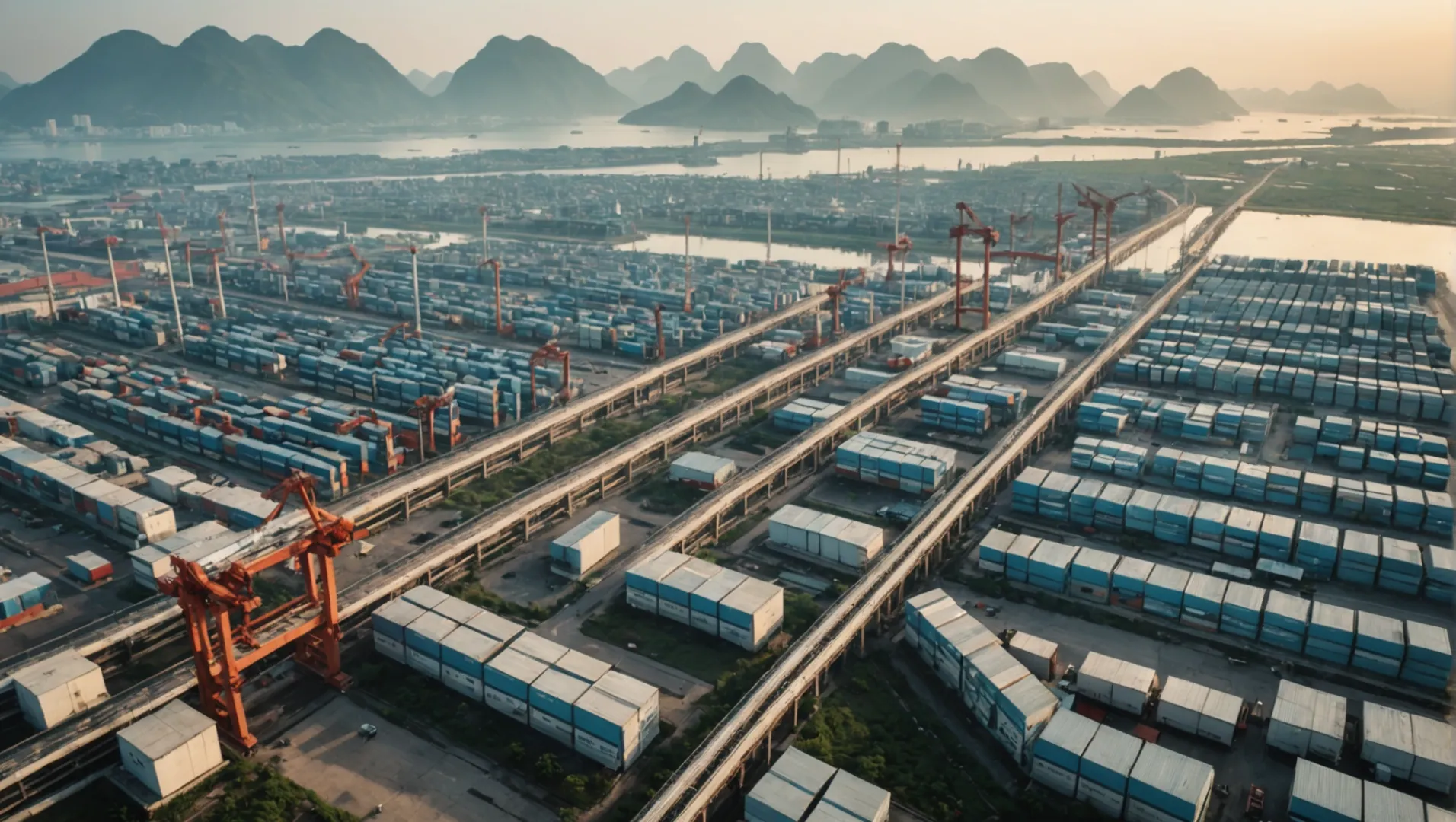
Aperçu de l'infrastructure de la chaîne d'approvisionnement en Chine
Le système chinois de production de purificateurs d'air se distingue par son large éventail de fournisseurs et de réseaux d'usines. Cette structure couvre toutes les étapes de la production, de la recherche de matières premières à l'assemblage des pièces finales. Les usines chinoises bénéficient de la proximité des principaux fournisseurs3ce qui réduit les frais de transport et les temps d'attente.
La chaîne d'approvisionnement en développement du Viêt Nam
Le Viêt Nam commence tout juste à mettre en place un système d'approvisionnement similaire à celui de la Chine pour les purificateurs d'air. À l'heure actuelle, la plupart des matériaux doivent être importés de Chine, ce qui entraîne des dépenses plus élevées et des délais d'attente plus longs. Cependant, des efforts sont déployés pour développer les capacités de production locales du Viêt Nam. Le gouvernement vietnamien met en place des plans pour attirer les investissements étrangers afin de construire une base industrielle solide qui pourrait éventuellement devenir autosuffisante.
Analyse comparative : Chine vs. Vietnam
Tableau : Principales différences dans l'infrastructure de la chaîne d'approvisionnement
| Aspect | Chine | Vietnam |
|---|---|---|
| Réseau d'approvisionnement | Large et bien organisé | Croissance et dispersion |
| Approvisionnement en matières premières | Acquis localement | Principalement importés de Chine |
| Rapport coût-efficacité | Élevée en raison de la production à grande échelle | En baisse mais en progrès |
| Lead Times | Court | Plus long en raison des importations |
Impact des facteurs géopolitiques
Les problèmes commerciaux actuels entre la Chine et les États-Unis poussent de nombreuses entreprises à considérer des pays comme le Viêt Nam comme des sites de production alternatifs. L'idée de "Chine+1" gagne du terrain : les entreprises restent en Chine et s'étendent également à d'autres régions pour gérer les risques liés aux droits de douane et aux tensions politiques. Cette approche pourrait accélérer la croissance des infrastructures du Viêt Nam si davantage d'entreprises choisissent d'investir dans les chaînes d'approvisionnement locales.
Perspectives d'avenir
À mesure que la rivalité entre la Chine et le Viêt Nam s'intensifie, les infrastructures des deux pays risquent de changer. La Chine continuera d'améliorer ses réseaux existants, tandis que le Viêt Nam se concentrera sur les points suivants renforcer les capacités4 réduire la dépendance à l'égard des importations. Les deux pays présentent des avantages uniques, que les entreprises doivent prendre en compte dans leurs stratégies.
La chaîne d'approvisionnement de la Chine pour les purificateurs d'air est inégalée.Vrai
La Chine dispose d'un vaste groupe de fournisseurs, ce qui permet de réduire les dépenses et les délais de livraison.
Le Viêt Nam importe la plupart des composants des purificateurs d'air de Chine.Vrai
Le Viêt Nam dépend des importations car son système de chaîne d'approvisionnement est encore en cours de développement.
Quelles sont les normes de qualité des purificateurs d'air produits dans chaque pays ?
Les purificateurs d'air sont probablement des articles ménagers importants. Il est essentiel de connaître les normes de qualité en vigueur dans les différents pays pour faire des choix d'achat judicieux.
Les normes de qualité des purificateurs d'air varient d'un pays à l'autre et sont souvent influencées par l'environnement réglementaire et les pratiques industrielles de chaque pays. La Chine adhère aux normes GB/T 18801-2015, qui garantissent l'efficacité et la sécurité, tandis que le Viêt Nam aligne ses normes sur les attentes internationales à mesure que sa capacité de production augmente.
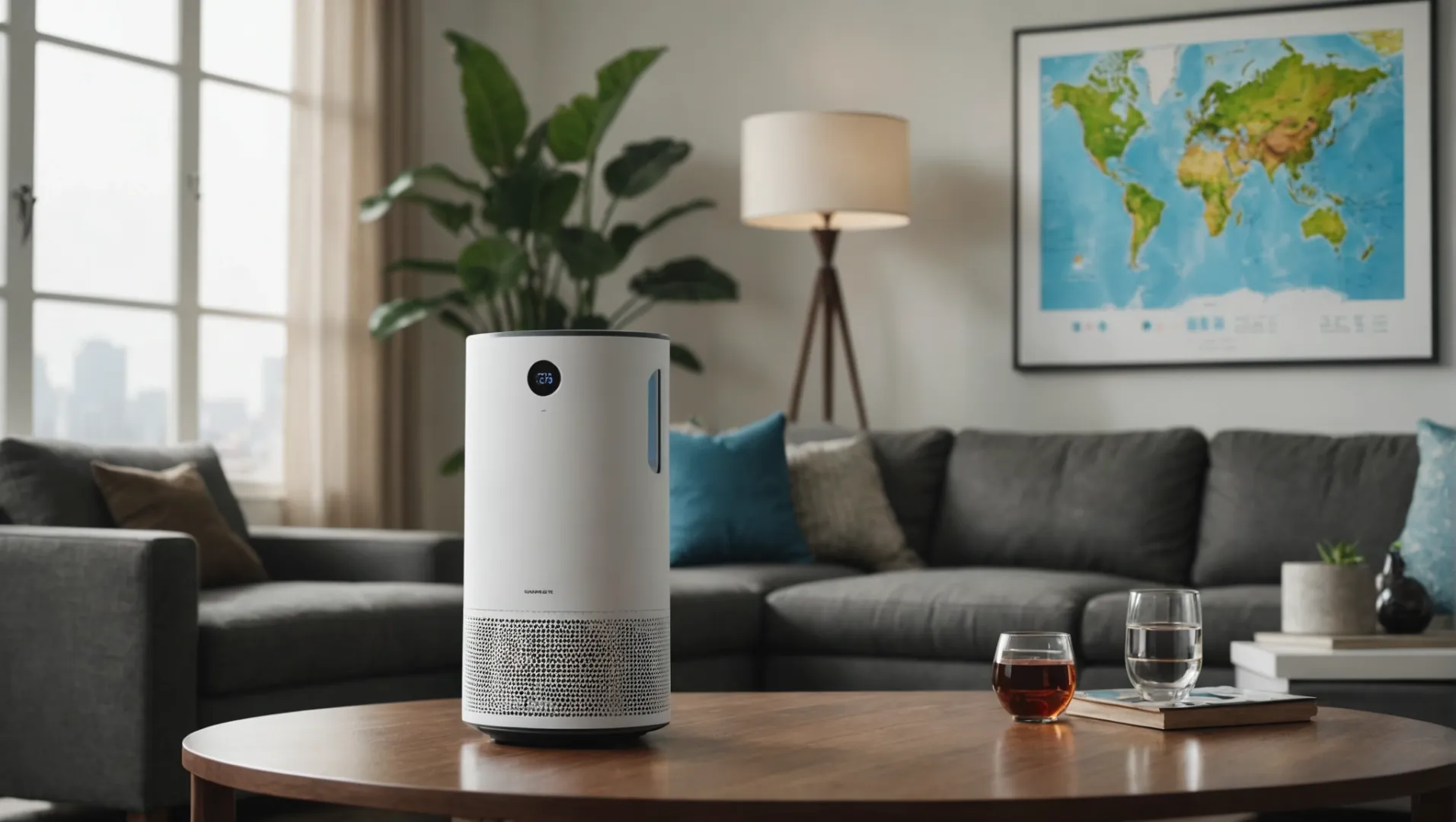
Comprendre les normes chinoises relatives aux purificateurs d'air
La Chine est depuis longtemps le leader de la fabrication de purificateurs d'air, ses normes de qualité étant ancrées dans la directive GB/T 18801-2015. Cette norme définit des paramètres essentiels tels que le taux de distribution d'air pur (CADR), les niveaux de bruit et la consommation d'énergie. La plupart des fabricants chinois se conforment à ces normes. des lignes directrices strictes5 pour s'assurer que leurs produits sont à la fois efficaces et sûrs.
Le nouveau cadre de qualité du Viêt Nam
Alors que le Viêt Nam cherche à s'établir en tant que centre de production, le pays s'efforce d'élaborer des normes de qualité complètes pour les purificateurs d'air. Actuellement, le Viêt Nam ne dispose pas de sa propre norme nationale pour les purificateurs d'air, mais suit des références internationales telles que la norme ISO 16000 pour la qualité de l'air intérieur. Cette approche aide les fabricants vietnamiens à produire des appareils qui répondent aux attentes mondiales, bien qu'il faille s'attendre à un développement plus poussé des normes locales.
Comparaison des mesures d'assurance qualité
Alors que la Chine a mis en place des systèmes d'essai et de certification, y compris un étiquetage obligatoire et des contrôles de conformité réguliers, le Viêt Nam est en train de mettre en place des infrastructures similaires. Le tableau ci-dessous illustre les principales différences entre les mesures d'assurance qualité des deux pays :
| Aspect | Chine | Vietnam |
|---|---|---|
| Norme nationale | GB/T 18801-2015 | Adopte des normes internationales telles que l'ISO |
| Moyens d'essais | Vaste, avec des équipements de pointe | En développement, avec un accent sur la modernisation |
| Contrôle de conformité | Inspections et audits réguliers | En cours |
Impacts des normes de qualité sur l'industrie
Les différents niveaux de normes et d'infrastructures établies influencent la perception de la qualité des purificateurs d'air produits en Chine et au Viêt Nam. Tendances du marché mondial6 suggèrent qu'en renforçant ses cadres de qualité, le Viêt Nam pourrait devenir plus compétitif au niveau international. Toutefois, pour l'instant, les systèmes bien établis de la Chine offrent une fiabilité à laquelle de nombreuses marques mondiales continuent de se fier.
Considérations relatives aux consommateurs
Pour les consommateurs, il est essentiel de comprendre ces normes lorsqu'ils choisissent un purificateur d'air. Les produits fabriqués en Chine sont souvent perçus comme plus fiables en raison de leur conformité aux réglementations établies. Quant aux acheteurs qui envisagent d'acheter des produits vietnamiens, ils doivent rechercher les certifications d'organismes internationaux reconnus pour s'assurer de la qualité des produits.
La Chine applique la norme GB/T 18801-2015 pour les purificateurs d'air.Vrai
Les purificateurs d'air chinois sont conformes à la norme de qualité GB/T 18801-2015.
Le Viêt Nam dispose de sa propre norme nationale pour les purificateurs d'air.Faux
Le Vietnam se conforme désormais à des normes mondiales telles que l'ISO, et non plus à ses propres normes.
Comment les futures politiques commerciales pourraient-elles influer sur la production de purificateurs d'air ?
Avec l'évolution des règles du commerce mondial, les producteurs de purificateurs d'air se heurtent à des obstacles et à des possibilités considérables. Il est important de comprendre ces effets pour pouvoir planifier avec soin.
Les futures politiques commerciales pourraient remodeler la production de purificateurs d'air en influençant les chaînes d'approvisionnement, les coûts de fabrication et les partenariats internationaux. Ces changements pourraient entraîner des déplacements des sites de fabrication, par exemple une transition de la Chine vers le Viêt Nam.
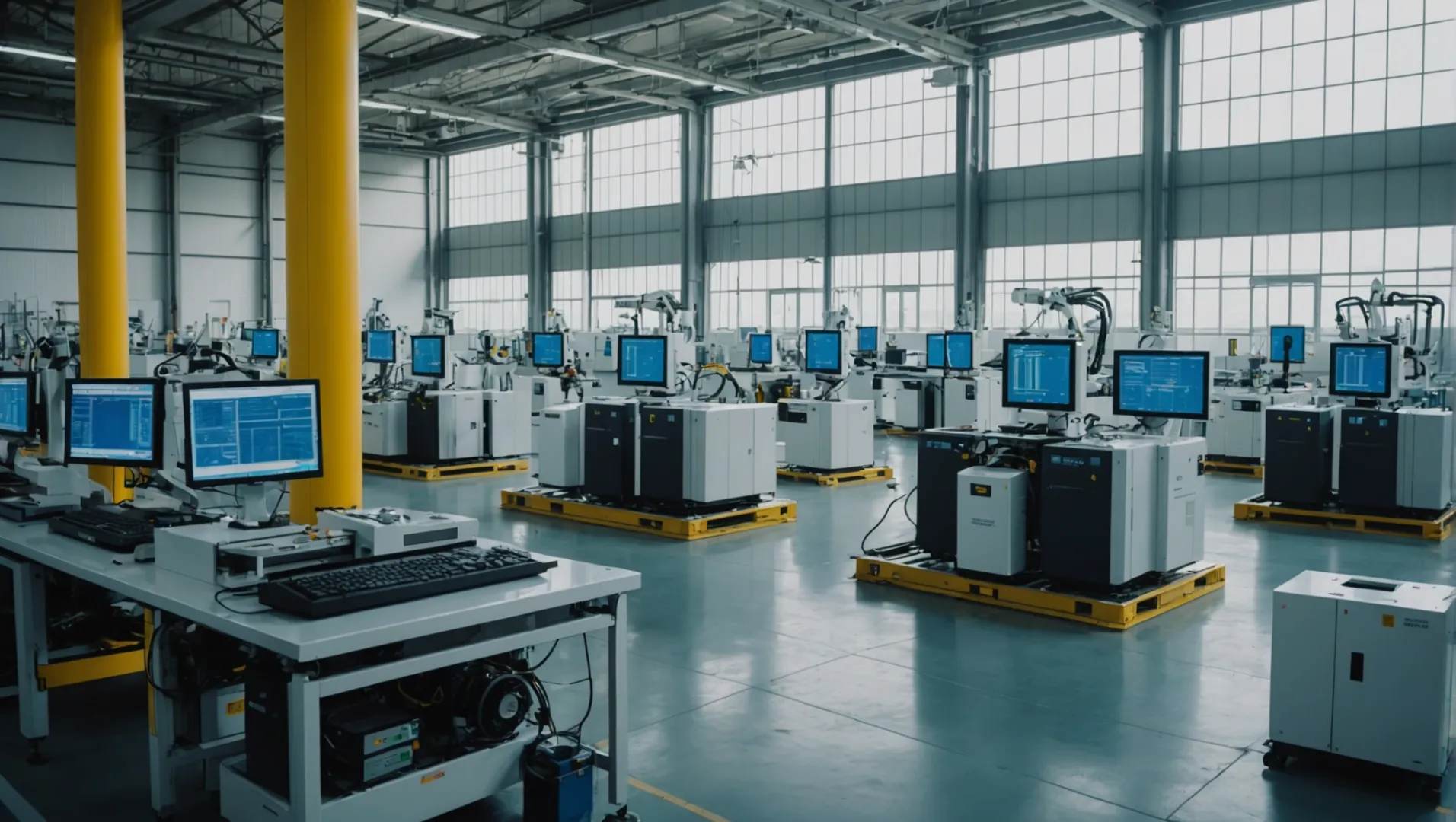
Le rôle des tarifs douaniers et des accords commerciaux
Les règles commerciales telles que les droits de douane et les accords commerciaux déterminent la provenance des purificateurs d'air. Par exemple, les États-Unis ont introduit des droits de douane sur les produits chinois à l'époque de Trump, ce qui a poussé de nombreuses entreprises à reconsidérer l'utilisation d'usines chinoises. Cela a poussé les entreprises à se tourner vers d'autres pays, comme le Viêt Nam.
Stratégie Chine+1
Le plan "Chine+1" consiste à étendre la production en dehors de la Chine afin d'éviter les problèmes liés aux droits de douane et aux questions politiques. La Chine reste le leader de la production de purificateurs d'air car elle dispose d'un solide réseau d'approvisionnement. Toutefois, de nombreuses entreprises commencent à investir dans des usines au Viêt Nam.
Même si le Viêt Nam ne dispose pas encore d'un réseau complet d'approvisionnement en purificateurs d'air, les futures règles commerciales pourraient encourager la croissance de l'infrastructure, ce qui aiderait le Viêt Nam à devenir plus compétitif. Toutefois, au début, les coûts pourraient être plus élevés en raison de la nécessité d'utiliser des matériaux provenant de Chine.
Impact potentiel sur les coûts
| Facteur | Chine | Vietnam |
|---|---|---|
| Coûts tarifaires | Impact potentiel élevé | Impact initial plus faible |
| Efficacité de la chaîne d'approvisionnement | Établi | Développement |
| Coûts de fabrication | Plus bas | 10-15% plus élevé |
Le tableau ci-dessus montre les différences de coûts entre la production de purificateurs d'air en Chine et au Viêt Nam. Les règles commerciales pourraient modifier ces chiffres, et peut-être réduire la charge des coûts du Viêt Nam au fil du temps.
Considérations géopolitiques
La politique mondiale façonne les règles commerciales, qui modifient ensuite les choix de fabrication. La rivalité actuelle entre les États-Unis et la Chine pourrait entraîner de nouvelles modifications des règles, affectant les chaînes d'approvisionnement mondiales. Dans ce cas, la situation géographique du Viêt Nam pourrait aider les entreprises à se prémunir contre de tels changements, en les incitant à y implanter leur production.
Tendances sectorielles à long terme
À l'avenir, les règles commerciales pourraient favoriser la production locale afin de réduire la dépendance à l'égard d'un seul pays. Cela pourrait conduire à des investissements dans de nouvelles technologies et à des améliorations dans l'industrie des purificateurs d'air, ce qui permettrait de construire une chaîne d'approvisionnement mondiale plus solide et plus variée.
En résumé, même si la Chine reste importante dans la fabrication des purificateurs d'air, les règles commerciales à venir pourraient modifier considérablement la situation du secteur, ce qui pourrait faire du Viêt Nam une option solide pour la production.
Les droits de douane sur les produits chinois augmentent le coût des purificateurs d'air.Vrai
Les tarifs douaniers augmentent les dépenses des entreprises qui dépendent des usines chinoises.
La chaîne d'approvisionnement du Viêt Nam est plus efficace que celle de la Chine.Faux
La Chine possède un système d'approvisionnement solide, tandis que celui du Viêt Nam est en pleine expansion.
Conclusion
Le choix entre la Chine et le Viêt Nam dépend de la demande actuelle et de la planification future. Évaluez les dépenses, la préparation de la chaîne d'approvisionnement et l'orientation du marché pour déterminer lequel correspond aux objectifs de votre entreprise.
-
Découvrez comment l'efficacité de la chaîne d'approvisionnement influe sur les coûts de fabrication : "Cette dynamique commerciale a creusé le déficit commercial du Viêt Nam avec la Chine à $50 milliards en 2023, soit une augmentation de près de 50% au cours des cinq dernières années", ... ↩
-
Découvrez les avantages potentiels à long terme du Vietnam en termes de coûts. : L'industrie manufacturière au Viêt Nam a été à l'épicentre de la forte croissance du pays. Ce secteur a contribué pour plus de 20 % au PIB du pays. ↩
-
Le marché des purificateurs d'air en Chine : Le marché chinois des purificateurs d'air a été évalué à 2,54 milliards USD en 2023 et devrait atteindre 3,78 milliards USD d'ici 2029 avec un TCAC de 6,8% au cours de la période de prévision.... ↩
-
En savoir plus sur les stratégies vietnamiennes visant à renforcer les capacités de production locales.. : Les principales entreprises présentes sur le marché vietnamien des purificateurs d'air sont Sharp Electronics (Vietnam) Company Limited, Panasonic Vietnam Co, ... ↩
-
Découvrez les directives de qualité établies par la Chine pour des purificateurs d'air fiables : La présente norme remplace la norme GB/T 18801-2008 "Purificateurs d'air". Les principales différences techniques entre cette norme et la GB/T 18801-2008 sont les suivantes. ↩
-
Découvrez comment le marché vietnamien évolue avec l'émergence de normes de qualité.. : Le marché vietnamien des purificateurs d'air peut être divisé en fonction du type de filtre, du segment de prix et du canal de vente. En termes de type de filtre, le marché ... ↩



